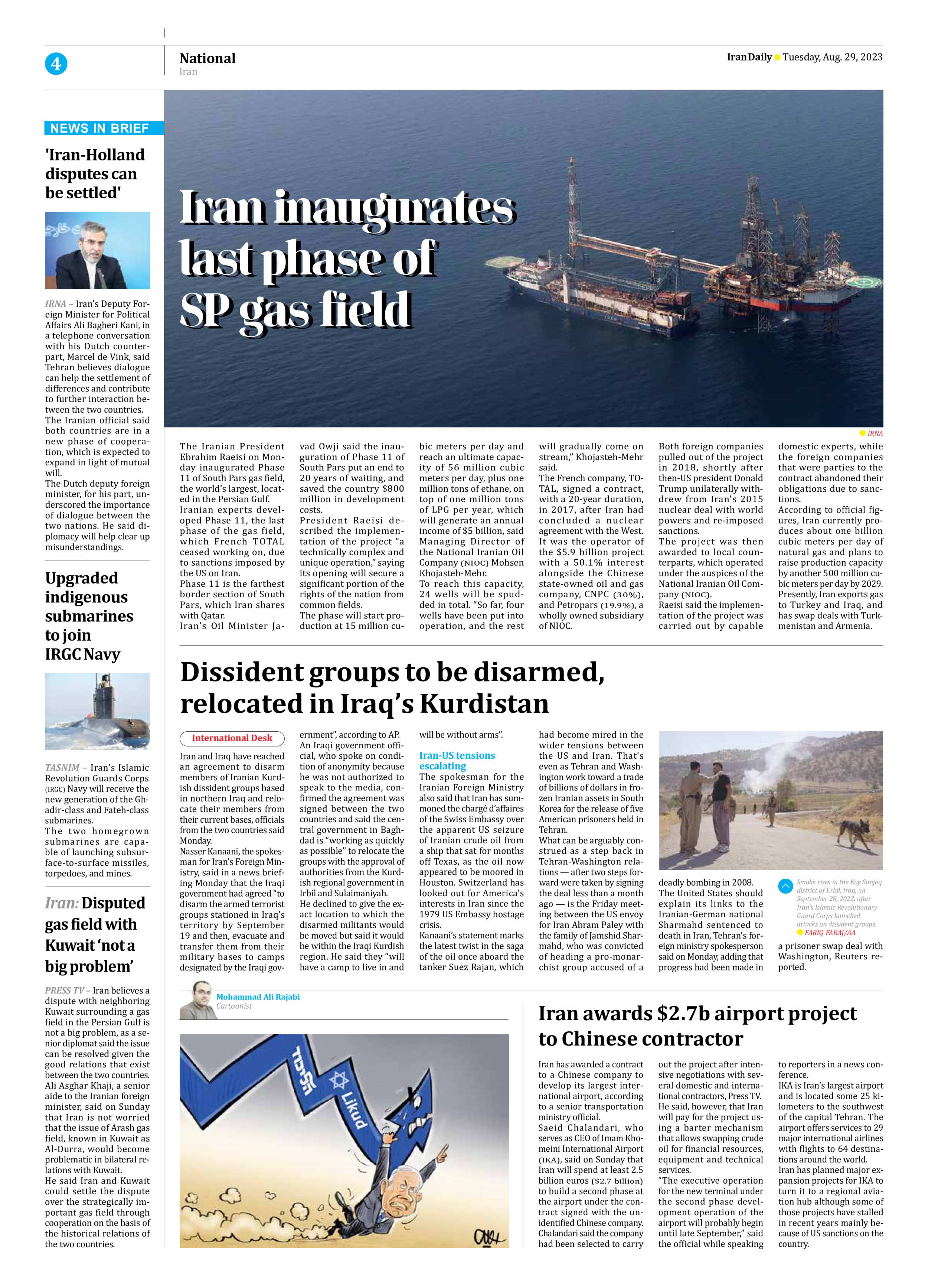
Iran inaugurates last phase of SP gas field
The Iranian President Ebrahim Raeisi on Monday inaugurated Phase 11 of South Pars gas field, the world’s largest, located in the Persian Gulf.
Iranian experts developed Phase 11, the last phase of the gas field, which French TOTAL ceased working on, due to sanctions imposed by the US on Iran.
Phase 11 is the farthest border section of South Pars, which Iran shares with Qatar.
Iran’s Oil Minister Javad Owji said the inauguration of Phase 11 of South Pars put an end to 20 years of waiting, and saved the country $800 million in development costs.
President Raeisi described the implementation of the project “a technically complex and unique operation,” saying its opening will secure a significant portion of the rights of the nation from common fields.
The phase will start production at 15 million cubic meters per day and reach an ultimate capacity of 56 million cubic meters per day, plus one million tons of ethane, on top of one million tons of LPG per year, which will generate an annual income of $5 billion, said Managing Director of the National Iranian Oil Company (NIOC) Mohsen Khojasteh-Mehr.
To reach this capacity, 24 wells will be spudded in total. “So far, four wells have been put into operation, and the rest will gradually come on stream,” Khojasteh-Mehr said.
The French company, TOTAL, signed a contract, with a 20-year duration, in 2017, after Iran had concluded a nuclear agreement with the West. It was the operator of the $5.9 billion project with a 50.1% interest alongside the Chinese state-owned oil and gas company, CNPC (30%), and Petropars (19.9%), a wholly owned subsidiary of NIOC.
Both foreign companies pulled out of the project in 2018, shortly after then-US president Donald Trump unilaterally withdrew from Iran’s 2015 nuclear deal with world powers and re-imposed sanctions.
The project was then awarded to local counterparts, which operated under the auspices of the National Iranian Oil Company (NIOC).
Raeisi said the implementation of the project was carried out by capable domestic experts, while the foreign companies that were parties to the contract abandoned their obligations due to sanctions.
According to official figures, Iran currently produces about one billion cubic meters per day of natural gas and plans to raise production capacity by another 500 million cubic meters per day by 2029.
Presently, Iran exports gas to Turkey and Iraq, and has swap deals with Turkmenistan and Armenia.







